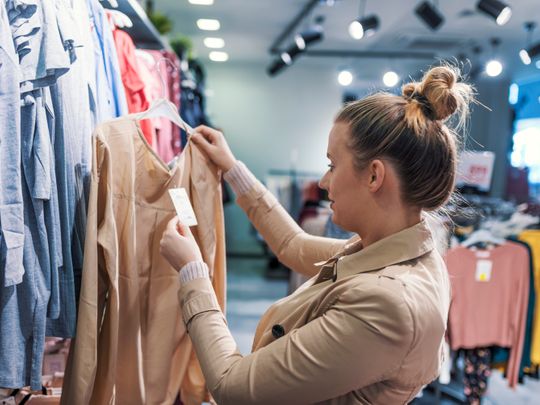
It’s now easier than ever to get your hands on a used Louis Vuitton tote or Gucci belt bag for cheap. But the rise of the online resale market in luxury goods needn’t have executives of high-end fashion houses shaking in their Christian Louboutin boots.
In fact, it’s a model that could actually help an industry that thrives on scarcity and exclusivity, especially if designers use this emerging channel to their advantage. One reason is that the growth of the luxury resale market, popularised by such sites as the RealReal Inc, Poshmark and Vestiaire Collective, is poised to outstrip that of the broader market.
The Boston Consulting Group and Altagamma estimate that it will expand by an average of 12 per cent per year through 2021, compared to about 3 per cent for the primary luxury market.
Not much price slashing
While prices on the resale market tend to be lower than retail, they’re not so much lower that they appeal to a totally different customer. Jamie Merriman, an analyst at Bernstein, found that the median price of a Louis Vuitton bag on The RealReal was $1,025. That’s a deal compared to the median $3,000 price her analysis found for new Louis Vuitton purses.
But that still leaves the brand in a vastly different tier than, say, Coach or Michael Kors, whose new bags might cost $300 to $400. In some cases, the prices fetched on the second-hand market might only add to a label’s mystique and cachet. Rare Hermés Birkin bags can sell on sites such as RealReal for higher prices than new ones do.
Reassuring
Perhaps more important, though, is the way that second-hand sites can change the calculus of buying a new luxury piece in the first place. Say you’re considering a classic Balenciaga City bag for about $2,000. Is it worth the investment?
A scroll around RealReal shows that you might be able to resell it for about $600. That could be exactly the kind of assurance a first-time millennial or Generation Z luxury buyer needs to take the plunge on a pricey accessory.
None of this is to say that the luxury powerhouses shouldn’t get into the burgeoning resale market themselves. Some already are. At A.P.C., a French fashion house, customers can apply to trade in their worn jeans. If accepted, they can buy a new pair at half price.
Another option would be to acquire second-hand platforms, as Cie Financiere Richemont SA did with Watchfinder last year. But this could create challenges, particularly when it comes to authenticating other brands’ products. That’s why cooperation between luxury brands and resale sites looks like the more likely and logical approach.
Burberry Group Plc, has begun a partnership with the RealReal in which US customers who consign its goods can get a personal shopping session and tea at one of its boutiques. Such relationships allow the brands themselves to engage with shoppers who are participating in the second-hand market. They also allow these companies to market themselves as champions of sustainability and recycling.
Play nice
Luxury adviser Mario Ortelli of Ortelli & Co. says cooperation between fashion houses and second-hand sites could run even deeper as the market develops. Brands could play a bigger role in authenticating their products for resellers, for example. Another idea: Fashion labels could use data from resale sites to inform their merchandising decisions.
So there is good reason for the luxury giants to play nice with the resale sites right now — but they should be clear-eyed about the possibility that industry dynamics may eventually change. If these start-ups end up struggling to keep counterfeit products off their marketplaces, for instance, that would be a reason for the luxury brands to distance themselves.












